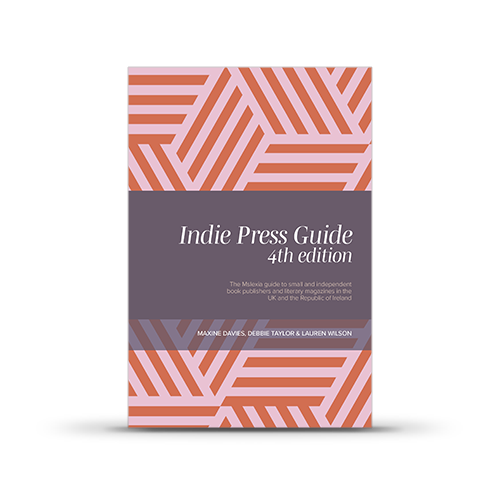
In 2023, we released the much-anticipated fourth edition of our beloved Indie Press Guide.
Featuring a total of 719 independent publishers and literary magazines, this edition is our biggest undertaking yet, requiring months of careful sifting, reviewing, and editing.
During the production process, we noticed that the listings reflected some interesting developments in the world of independent publishing.
We've taken a glance back to the first edition of the Indie Press Guide, and looked at how things have changed – creating a brief snapshot of the state of independent publishing.
Overall
Separated into distinct categories, our listings showcase publishers at the top of their game – from indie presses specialising in prose and poetry books and pamphlets to magazines which feature prose, poetry, or a combination of both.
In the very first edition of the IPG, we featured a total of 432 independent publishers and literary magazines from across the UK and Republic of Ireland.
In the fourth edition, we featured a total of 719 independent presses and literary magazines – an increase of 66 per cent.
However, just 240 publishers appeared in both the first and fourth editions of the Indie Press Guide, suggesting that a staggering 44 per cent of the presses who responded to us back in 2016/2017 have since closed down, changed their name, been acquired, or have become otherwise inactive.
On a more positive note, 305 of the independent publishers featured in the fourth edition of the Indie Press Guide are completely new presses – reflecting just how turbulent and determined the world of indie publishing can be.
Magazines
Literary magazines are particularly vulnerable when it comes to the ever-changing indie publishing industry.
In her introduction to Literary Magazines in the fourth edition of the IPG, Mslexia's Editor Debbie Taylor observed that this is ‘often due to the lack of mainstream retail outlets and the extra commitment required to maintain a regular publishing schedule, whether monthly, bi-monthly, or quarterly’.
Running a literary magazine is a lot of effort – sifting through submissions, laying out pages, haggling with printing companies, marketing and distributing – and often results in very little financial return.
Literary magazines can rarely survive on income from subscriptions and sales alone. Some are supported financially by Arts Councils, local government funding, or generous donations, but often even this isn’t enough to make all of an (often unpaid) editor’s effort worthwhile.
In the first edition, we featured 168 literary magazines; in the fourth edition there are over 180.
While this may look like a significant increase, in Debbie’s introduction she noted that ‘the total number of literary magazines has actually dropped by ten per cent’ since the third edition.
Of the 180 literary magazines included, 38 are brand new.
This once again reflects the constantly changing landscape of independent publishing. Meanwhile, the industry stalwarts – some of them older than Mslexia’s 25 years – continue to thrive.
Editors
The gender makeup of independent press editors, too, is something that has changed since the first edition of the IPG.
In the first edition, 304 indies included details of their editors. Of these, 164 (54 per cent) had at least one female editor on their team. A total of 93 indie presses were run exclusively by female editors – either as a pair or team, or by an individual editor.
In the fourth edition, 515 of the indies we listed disclosed information about their editors. Of these, 257 – 50 per cent – had at least one female editor: the number of female editors has decreased by four per cent.
However, in the fourth edition, we also discovered that 168 indie presses had exclusively female editors. That’s 65 per cent – revealing a welcome 9 per cent increase in the number of our listed indies being run by women.
In an industry like publishing, seven years is both an eternity and not very much time at all.
While indie presses appear to rise and fall overnight, with the gaps left by the demise of one publisher seemingly quickly filled by another, our research suggests that, overall, the indie publishing sector is thriving.
There are more independent presses than ever before, all of them seeking new, exciting voices. And you can find more than 700 of them in the fourth edition of the Indie Press Guide.
LAUREN WILSON took major responsibility for compiling the 4th edition of the Indie Press Guide. She is also currently putting the finishing touches to her debut novel about social media and cults.

